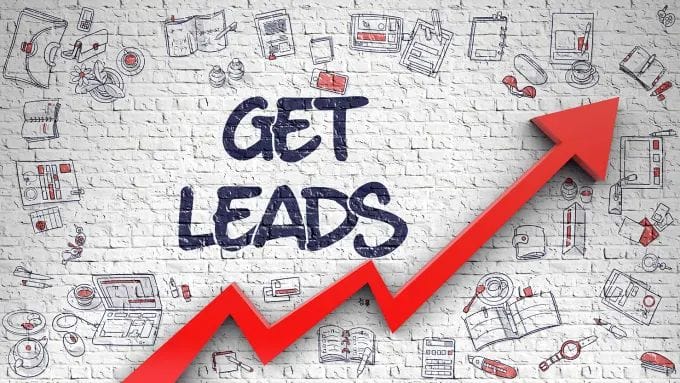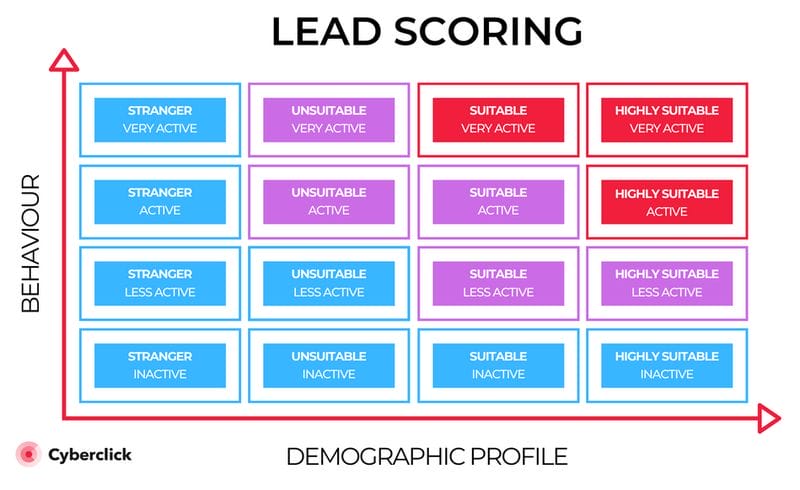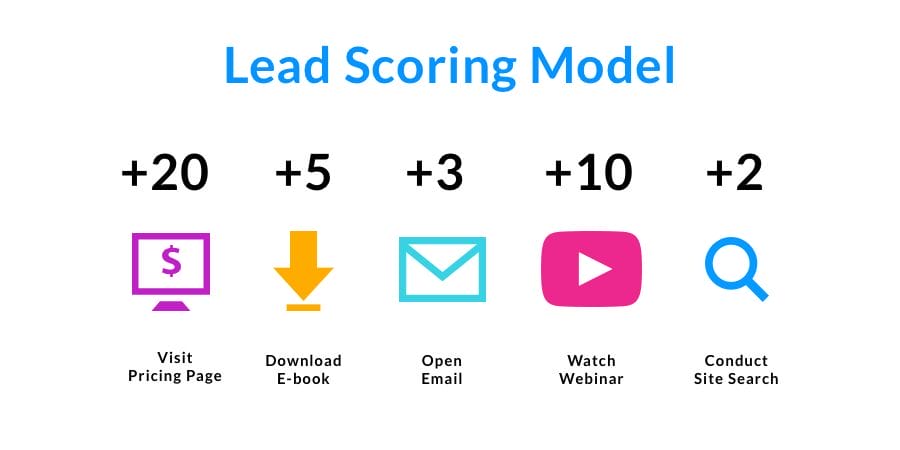
How Can Lead Scoring Transform Your B2B Sales and Marketing Strategies?
- Use lead scoring to optimize B2B sales and marketing.
- Point-Base, Predictive, Behavioral, and Fit vs. Engagement are the best lead scoring models.
- Define ideal customer profile for effective lead scoring.
- Implement marketing automation for efficient lead tracking.
Incorporate lead scoring to maximize B2B sales and marketing effectiveness. Explore Point-Based, Predictive, Behavioral, and Fit vs. Engagement scoring models. Define your ideal customer profile for precise lead scoring. Leverage marketing automation for streamlined lead tracking.
In the ever-evolving world of B2B sales and marketing, it is crucial to determine and prioritize leads to maximize revenue and ROI. If you want your website’s revenue to skyrocket, you should try lead scoring. Various lead scoring models assist businesses in streamlining their sales and marketing strategies. In this article, we will help you familiarize yourself with the world of lead scoring for B2B lead identification. We will highlight the significance of lead scoring, lead scoring models, and suitable practices for implementation.
A constructive lead scoring model aids in prioritizing good leads. Furthermore, an effective lead model helps a business owner convert a cold lead into a sales-ready customer. This article will help you select the best lead scoring model for B2B lead identification.
The Importance of Lead Scoring in B2B
While using the lead scoring method, you assign numerical values to every lead based on specific characteristics and behaviors. Lead scoring models are a significant part of successful organizations. The models help the organization determine the leads that have the potential to convert into paying customers. Following are some reasons why every growing organization should opt for lead scoring models:

Improved Efficiency
A good lead scoring model prevents you from wasting time and effort on unqualified leads. It assists you in allocating sales and marketing resources to the correct leads. If you apply effective lead scoring models to your business, you can climb to the top of the mountain in a competitive B2B world.
Prioritizing Leads
During the B2B lead identification process, you will encounter some leads ready to make purchases while others are still in the research phase. Therefore, while dealing with potential customers, remember that every lead is different. Invest time and effort in the leads that are most likely to convert into potential consumers.
Lead Scoring Models
After getting to know the importance of lead scoring, let’s delve into some effective lead scoring models for B2B lead identification.

Point-Based Lead ScorinG Models
If you are a beginner with little experience with B2B lead identification, “Point-Based Scoring” is the best lead scoring model for you. It is a simple lead scoring model that assists you in determining the most suitable lead for your business. When you apply this model, you assign points to the customer’s attributes or actions. For example, you can give 10 points to a customer for downloading the whitepaper. Similarly, you can provide 20 points to a consumer for attending a webinar. After analyzing a lead for a specific time period, you can decide if it’s a potential customer or not.
Pros:
- It is suitable for beginners.
- It has a flexible mechanism to adjust point values.
Cons:
- It might ignore the significance of certain attributes.
- It does not consider the recency of actions.
Predictive Lead ScorinG Model
Predictive scoring is one of the finest lead scoring models out there. In the predictive scoring process, you utilize machine learning algorithms to observe a historical data set and predict the potential of a lead to convert into a customer. This model takes a wide range of data as its input. A large data set makes the process more reliable and authentic. The data set includes demographic, firmographic, and behavioral attributes. The output you receive from a predictive lead scoring model does not remain constant. It fluctuates with changing lead behavior.
Pros:
- It utilizes a wide range of data points as inputs.
- It reads the lead behavior and changes accordingly.
Cons:
- It is not for beginners.
- The model requires expertise to develop a machine learning algorithm.
- Predictive model does not give good results with limited data.
Behavioral Lead ScorinG Models
Behavioral scoring is another type of lead scoring model. It emphasizes on lead’s online behavior. The model assigns scores based on specific actions and characteristics. For example, you can give 10 points for visiting web pages, 20 points for engaging with emails, and 30 points for interacting with content. Furthermore, the behavioral scoring model assigns higher scores to leads that show higher intent. It is one of the most efficient ways to determine a lead score for the B2B lead identification process.
Pros:
- It is the most suitable model for digital marketing and online businesses.
- The model gives you a quick insight into the lead’s behavior.
Cons:
- It is not a decent scoring method for offline interactions.
- The model does not work with demographic or firmographic data.
Fit vs. Engagement Lead ScorinG Models
This model is one of the most professional lead scoring models for the B2B lead identification process. The “Fit vs. Engagement” scoring model deals with two factors: how well a lead suits your ideal customer profile and how engaged the lead is with your content. These two indicators assist in ensuring the quality of the lead. Moreover, it helps you observe the lead’s readiness to convert into a potential customer. Furthermore, this lead scoring model uses a fit score and an engagement score. After a complete analysis of the lead, the fit score and engagement combine to generate an overall score.
Pros:
- Gives a good analysis after balancing lead fit and engagement.
- It offers a diverse view of lead potential.
Cons:
- This method requires careful calibration of fit and engagement scores.
- It is a complex method to implement.
Best Practices to Implement Lead Scoring Model for B2B Lead Identification

Here are some of the best practices to implement a lead scoring model for B2B lead identification:
Define Your Ideal Customer Profile
When you start a lead scoring procedure, you define an ideal customer for your business. It is not an easy job to determine a good or bad lead. You should gather information about the industry, company size, job titles, and behaviors to distinguish a potential customer and other leads.
Collaborate Between Sales and Marketing
The sales and marketing team can work together to take lead scoring to another level. It is crucial to make the correct changes in the scoring model to get a sales-ready lead. The sales and marketing teams should communicate and identify a pattern that can make the model precise and accurate.
Implement Marketing Automation
Utilize the marketing automation tools to track and score leads automatically. If you are dealing with a large number of leads, the marketing automation tools make it easier to manage and respond to every potential customer.

